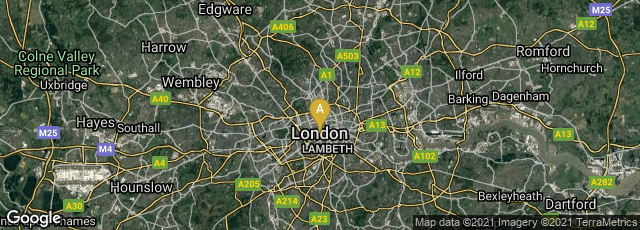

A: London, England, United Kingdom
"The Gestetner Cyclograph was a stencil-method duplicator that used a thin sheet of paper coated with wax (originally kite paper was used), which was written upon with a special stylus that left a broken line through the stencil, removing the paper's wax coating. Ink was forced through the stencil (originally by an ink roller), and it left its impression on a white sheet of paper.
"Until this time, any "short copy runs" which were needed for the conduct of a business—e.g., for the production of 10–50 copies of contracts, agreements, or letters—had to be copied by hand. (If more were needed, the document would have to go to the printers.) After the run had been copied, business partners had to read each one to ensure that they were all exactly the same, and that human error had not resulted in any aberrant copies. The process was time-consuming and frustrating. The stencil-copy method meant that only one copy had to be read, as all copies were mechanically identical. Gestetner had therefore revolutionised the office copying process.
"Gestetner developed his invention, with the stencil eventually being placed on a screen wrapped around a pair of revolving drums, onto which ink was placed. The drums were revolved and ink, spread evenly across the surface of the screen by a pair of cloth-covered rollers, was forced through the cuts made in the stencil and transferred onto a sheet of paper which was fed through the duplicator and pressed by pressure rollers against the lower drum. Each complete rotation of the screen fed and printed one sheet.
"Model 66 was perhaps the most famous Gestetner machine, designed by Raymond Loewy; examples are currently housed in the British Museum and Churchill's War Bunker in Whitehall" (Wikipedia article on Gestetner, accessed 2-2021).
With the development and wide availability of typewriters, Gestetner stencils that could be typed allowed the creation of copies similar to printed newspapers and books, and provided individuals who could not afford a printing press, or did not know how to operate one, the means to publish uncensored and uncontrolled ideas and distribute them in public places--an ability which had previously required access to much more expensive, much more hard to get, and much more complicated printing equipment.